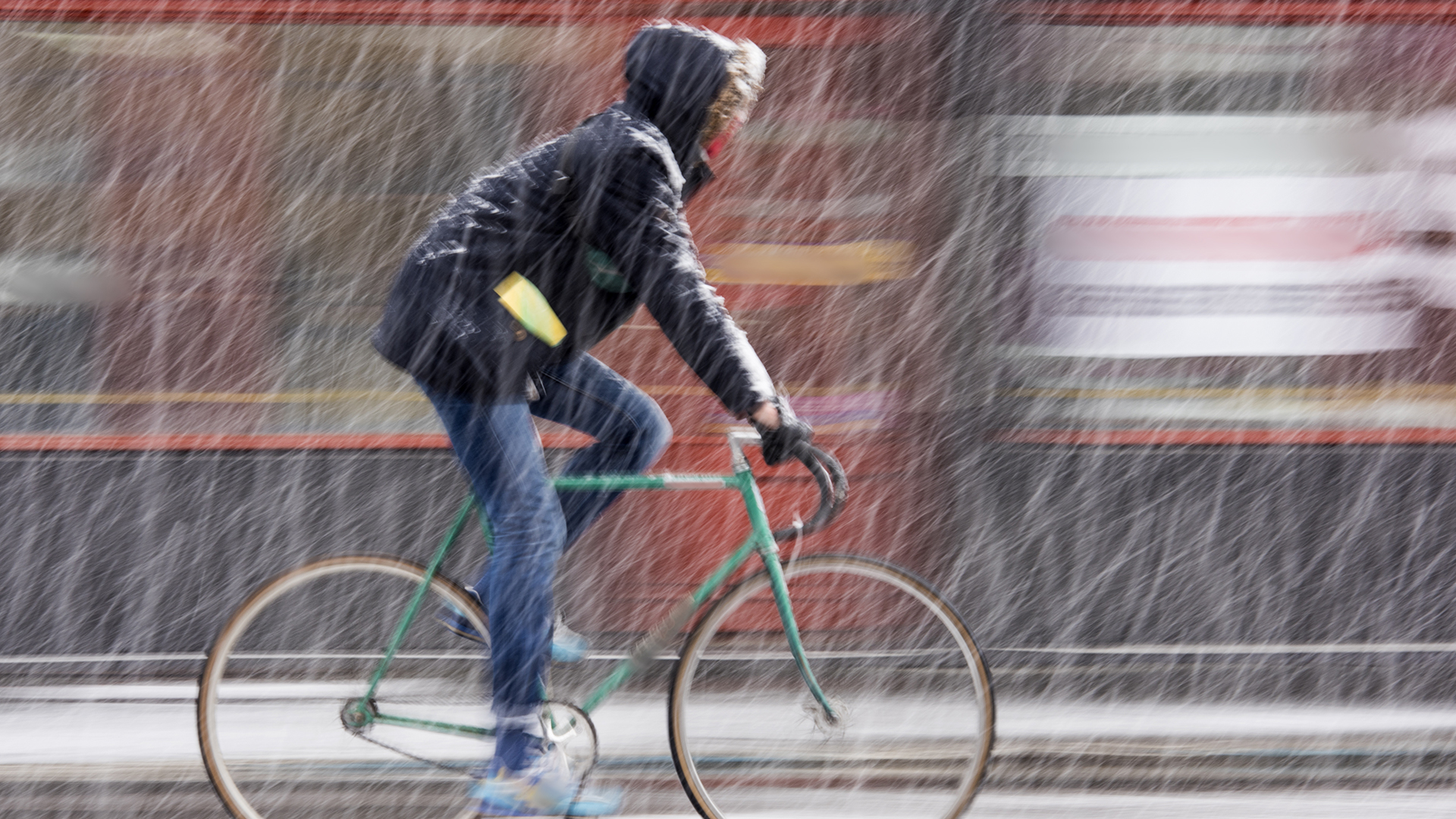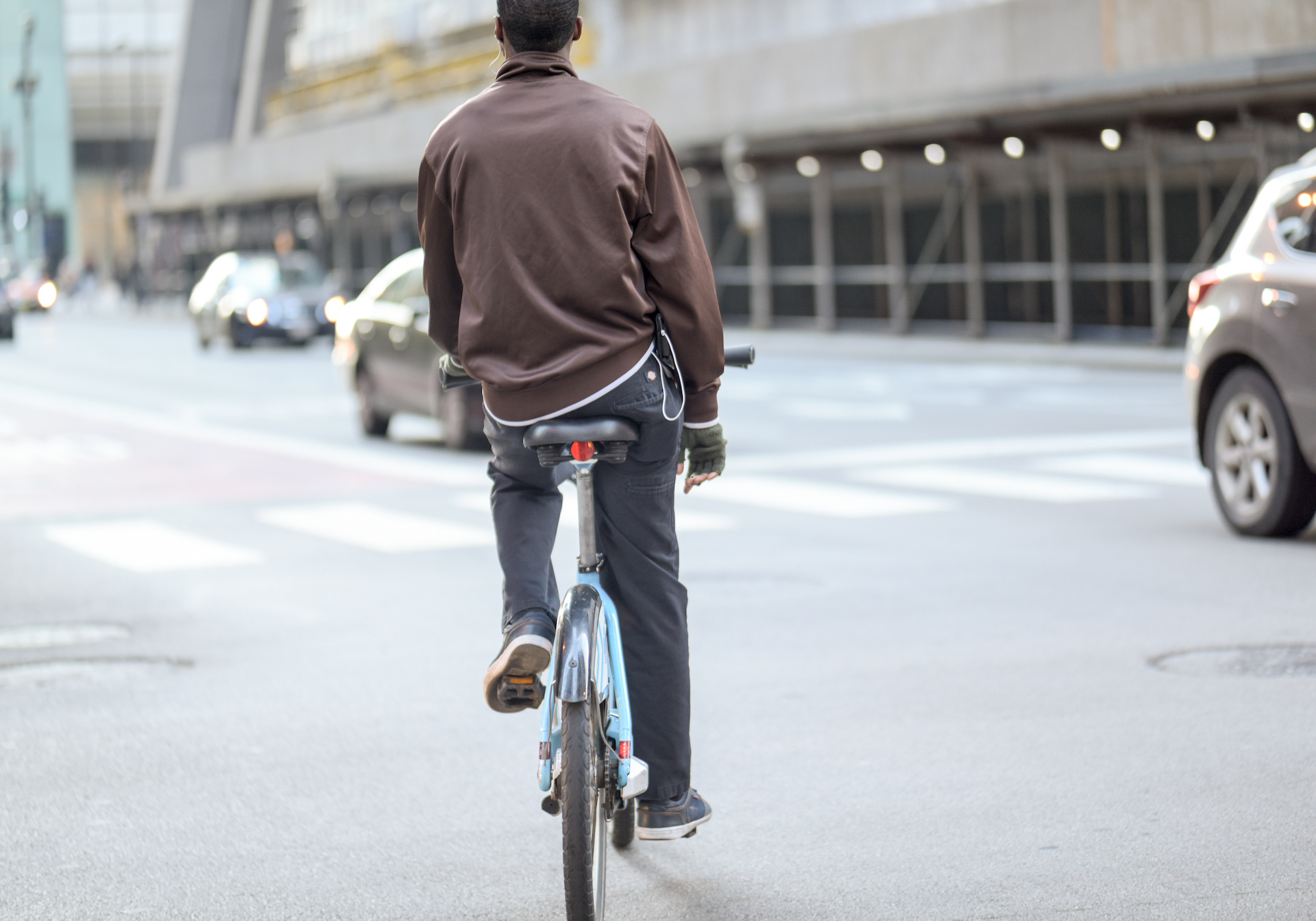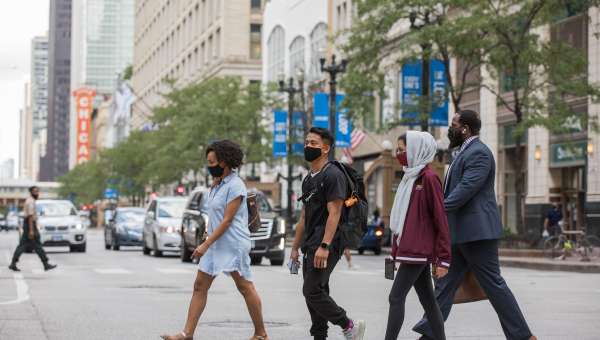Posted 5 years ago in Trending
4 MIN READ – You always thought those cyclists were crazy—the ones all bundled up, riding through the slush and sludge of another Chicago winter. But now, with coronavirus changing the way we move, you’re thinking about joining them. Below are eight tips for first-time winter cyclists.
1. Layers, not puffy coats
If you’re riding your bicycle through the winter for the first time, accept right now that it’s going to take some trial and error to figure out how to dress. But the main thing to remember is that layers are your friend. If you just throw your parka on over your street clothes, odds are you’ll start to get uncomfortably warm before your ride is over. Instead, give this combination a try: street clothes, hoodie, maybe another hoodie, windbreaker. This way, if you do start to warm up, you can pull over and remove one of your layers for a comfy end to your ride. Also, know your body! If you’re a sweaty cyclist, bring a change of clothes. If that’s not a particular concern of yours, don’t feel like you need special biking attire for your rides.
2. What about your legs?
Some cyclists ride all year-round without any additional layering on bottom, but you’ll probably be more comfortable on long rides or particularly cold days if you throw on a pair of long underwear, leggings, or even tights underneath your pants. Additionally, putting on a pair of baggy, rain-resistant pants as a top layer can help, especially on windy days.

3. Don’t forget your hands, face, and feet
Bar Mitts or lobster gloves are the gold standard for keeping your hands warm through the winter, but if you’re trying not to buy a ton of new gear for your new year-round hobby, see how it feels to ride with whatever heavy gloves you’d use for shoveling your sidewalk. For your face, now you really have no excuse not to wear a mask! Check out balaclavas as well, for also keeping your ears and head warm. You may also want to try headbands or earmuffs, and always consider what will fit under your helmet. For your feet, wool socks are the best bet. Many cyclists just wear their regular old snow boots on their winter rides, but again, experiment to find out what’s most comfortable, and always check the weather for the day before you head out.
4. Be visible
Lights are more important than ever in the winter, when it gets dark earlier, and when fewer cyclists are on the streets. Always be sure you have front and rear bike lights, and it’s not a bad idea to keep an extra set on you at all times in case your main set dies during a ride. You can be as wacky as you want with hi-viz gear and bike lights, but at minimum, have a front light and rear light at all times.

5. Ease into it
Biking through the winter is just as challenging mentally as it is physically. If you’ve never done it before, it can seem truly insane, especially right at the moment you step outside into the frigid air. So maybe try a short, low-pressure ride around the neighborhood before you jump into long commutes. You will most likely find that your body warms up pretty quickly, it’s not as bad as you thought it would be, and it’s actually kind of fun!
6. Slow down
Some cyclists put winter tires on their bikes, some don’t. Give your friendly neighborhood bike shop a call to talk through the pros and cons with your bike specifically. Whether you change the tires or not, though, remember to ride slower and brake sooner during the winter. Snow and black ice are a nightmare for cars, but you can slip and fall on a bike in these conditions, too.

7. Consider a Divvy
Divvy, Chicago’s bikeshare system, offers single rides, day passes, and annual memberships. Even if you have your own bike, dropping $100 for a membership that gives you unlimited Divvy rides might be a good idea. There are lots of pros, but one of them in the wintertime specifically is that these bikes are big, heavy, and most likely have fatter tires than your personal bike. They’re also not built for speed, so riding them might force you to be slower, in case you forget about that important tip! All of these traits make Divvy bikes pretty great for winter riding.

8. Know your limits
There are Chicago cyclists who will probably tell you there’s just about no weather condition that would keep them out of the saddle. But you don’t have to feel that way! If there’s snow or ice on the ground, if freezing rain is coming down, or if your gut is just telling you today isn’t your day to hop on the bike, it’s okay to opt for some other way to get around. You’re still learning, and don’t worry—the vast majority of cyclists on the streets of Chicago aren’t keeping up with the bike messengers. The most important thing is that you’re giving it a try, and you’re respecting your limits.



